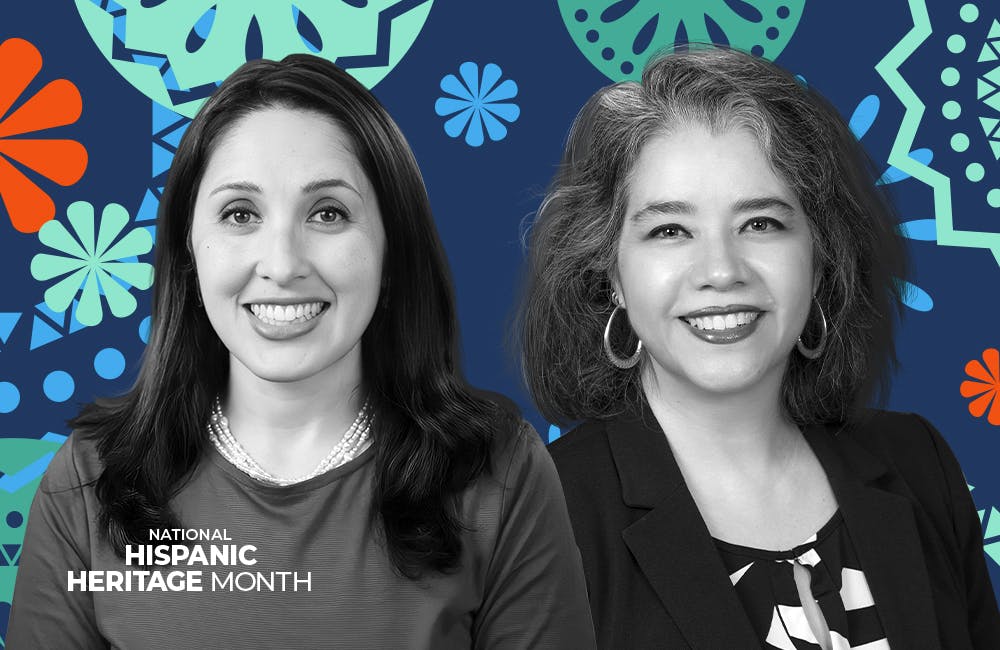The Uphill Climb to Creating a Diverse Federal Workforce
This National Hispanic Heritage Month, leaders from FDA and VA discuss how they are prioritizing diversity efforts.

A 2021 executive order called for the federal government to “be a model for diversity, equity, inclusion and accessibility.” As agencies work to introduce strategies for what this order looks like within their missions, technology leaders are calling for reformation and much needed attention on policies that impact technical talent.
Many federal leaders are calling for more women to join the technical workforce, especially in government. Only 29% of the federal science, technology, engineering and math (STEM) workforce are women, and only 25% of those are in leadership positions, according to a report from the Equal Employment Opportunity Commission.
This is an area becoming increasingly critical to agencies directly serving those who make up a diverse nation — such as U.S. veterans and taxpayers — and many leaders are prioritizing efforts that translate to more diversity in the workforce and in leadership roles to serve the public.
At the Department of Veterans Affairs, for example, Hispanic men account for 2.98% of the agency’s senior executives, while Hispanic women account for .74%, according to VA’s August 2022 data.
It’s a challenge federal leaders like VA Deputy CIO for the Electronic Health Record Modernization Integration Office Laura Prietula take personally.
“One of the biggest barriers is breaking down the perception that women cannot be engineers or cannot be in a technology field other than biomedical or health care,” Prietula said. “The second barrier, as a Latina, is that people are biased to what types of jobs or roles a Hispanic can take. Then of course, there is still bias out there that a woman’s place should be in the home or working on more traditional roles.”
Since early last year, VA has been undergoing a thorough examination of how it does business to identify and address implicit bias and barriers in its work, including hiring and retention practices. As a result of these department-wide analyses, VA is planning on implementing several steps designed to address bias against Hispanic applicants and senior executives, including training for hiring managers, better outreach to Hispanic communities and partnerships with Hispanic-serving organizations and institutions.
VA recently launched its Inclusion, Diversity, Equity and Accessibility (I-DEA) strategic plan, which identifies efforts the agency is taking to strengthen its workforce.
“VA is really transforming our human and infrastructure capabilities to advance really this inclusive environment that values and supports diverse communities,” Prietula said.
The plan features 10 workforce priorities to retain talent and expand diversity, including working with Congress to invest in wages, maximizing bonuses and retention incentives, increasing opportunities to advance, expediting the hiring process, offering greater workplace flexibility, helping cover the cost of childcare, investing in measures to improve employee well-being, investing in education, embedding DEI&A principles, and protecting the workforce from COVID-19.
VA recently hired Chief Diversity Officer Victor LaGroon to manage VA’s efforts to implement initiatives promoting inclusion, diversity, equity and access. As a senior advisor to the secretary, LaGroon will work to ensure that implementing I-DEA initiatives remains a priority for VA.
A similar approach at the FDA aims to combat workforce bias and build out a diverse culture by promoting its opportunities and starting early. The office hopes to expand opportunities for early exposure at the high school and undergraduate levels and is planning to increase its scope.
One initiative supporting this goal is the Aim High Summer Incubator Program, which FDA Executive Officer in the Office of Digital Transformation (ODT) Jess Berrellez founded during her tenure at FDA’s Center for Devices and Radiological Health.
She plans to implement this in ODT to increase awareness about educational opportunities and career pathways in STEM, as well as opportunities in public service by training underrepresented high school students to design and develop mobile apps, then using that experience as a gateway into public service and STEM.
The agency’s tech arm also is building out a culture of technology, developing career pathways and awareness programs. ODT recently launched a new program, Project UpTech, which aims to expand the agency’s technology training opportunities and strengthen its existing technology workforce.
“We’re being thoughtful and investing a lot more in opportunities for workforce upskilling and reskilling to create opportunities for folks who might be interested in transitioning into a career in tech or to advancing their career either as a subject matter expert or into a leadership role,” Berrellez said.
Whenever “mission accomplished” happens, it’s going to take a proactive and collaborative effort across government to get there.
“The notion of taking ownership of diversity initiatives, and not just having these initiatives be the responsibility of one person or of a program, but really seeing it as an imperative for building a strong workplace and a strong organization,” said Berrellez. “Within ODT, we’ve made a lot of progress on that front and are positioning this work in the context of our broader digital transformation initiatives… that holistic approach is really key for helping to build a truly meaningful, equitable workplace.”
Moving forward, FDA and VA will focus on developing new programs to increase diversity and building out new tools to reach a larger, more diverse population. ODT is developing a new Leadership Modernization Action Plan (LMAP) that’s aimed at helping to shape the “CIO of the future.” The LMAP will articulate a strategic framework for new ways of leading, including the leadership competencies and values needed to lead organizations in today’s complex scientific environment.
“We’re really interested in creating that diverse, highly talented leadership pipeline within our organization, but also helping to cultivate leaders who are diverse, inclusive and changemakers,” Berrellez said. “[We’re] really focusing on building a deep leadership bench and ‘smart skills,’ not just technical skills. That’s another initiative that we’ll be excited to share more on as it takes shape. The next year is going to be about articulating our strategic vision and helping to formalize and scale a lot of these early ideas that we’ve prototyped internally. FDA recently released a robust Diversity, Equity, Inclusion, and Accessibility (DEIA) Strategy, and the LMAP will be coupled with an ODT DEIA Action Plan.”
“From my perspective, I think that challenges can also be opportunities and serve as a competitive advantage,” Berrellez said.
This is a carousel with manually rotating slides. Use Next and Previous buttons to navigate or jump to a slide with the slide dots
-

Federal Leaders Revamp Tech Workforce, Policy
Despite the rise in interest of emerging technology, federal leaders see data, policy and the workforce as a best vehicle for change.
4m read -

Labor CAIO Outlines Responsible and Ethical AI Priorities, Use Cases
Department of Labor Chief AI Officer Mangala Kuppa outlined how her role is shaping the agency’s artificial intelligence strategy.
20m watch -

Feds Prioritize Strategic AI Adoption Amid Tech Hype
Army, Education and OPM emphasize upskilling and incremental integration to ensure responsible and effective use of AI in federal operations.
5m read -

Agencies Prioritize Pilots, Literacy to Overcome AI Challenges
DOL and HUD focus on change management and AI literacy to overcome adoption challenges and boost operational efficiency.
5m read








